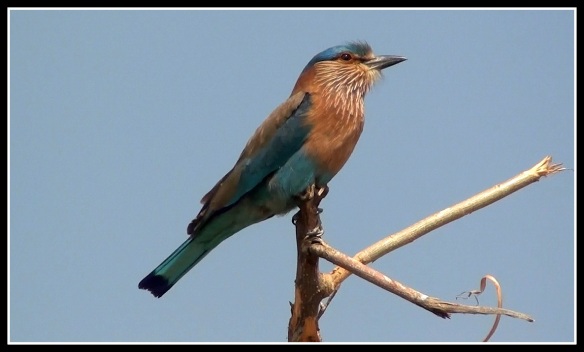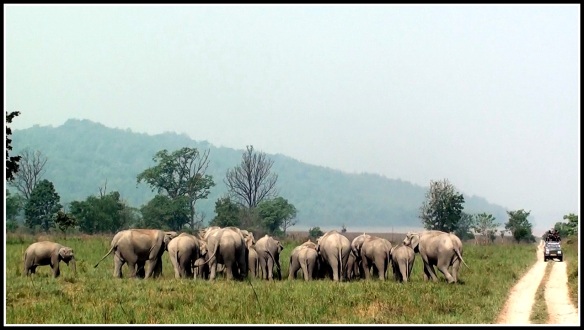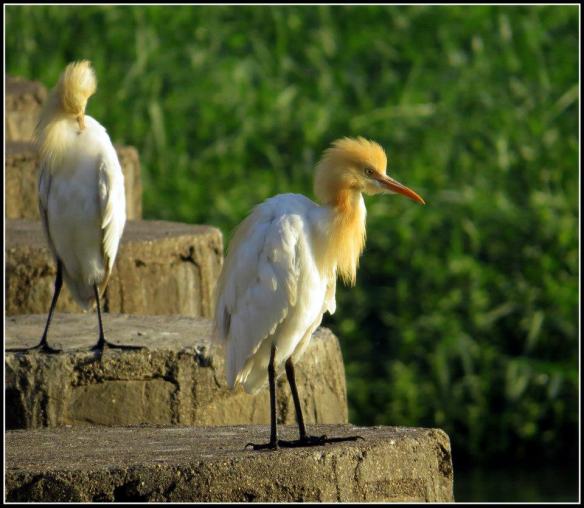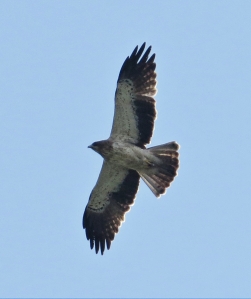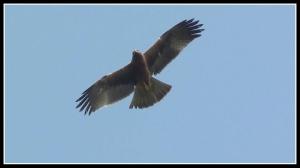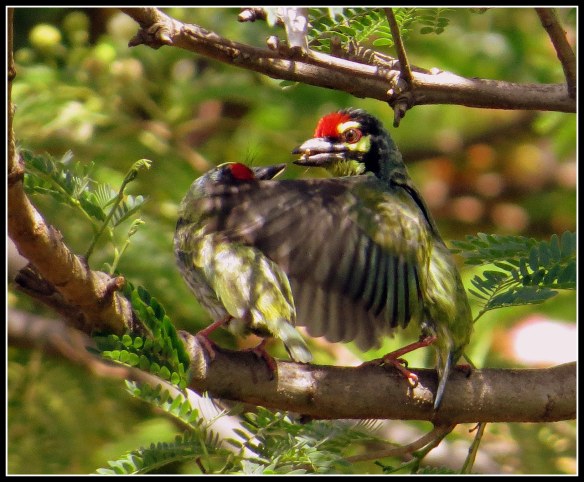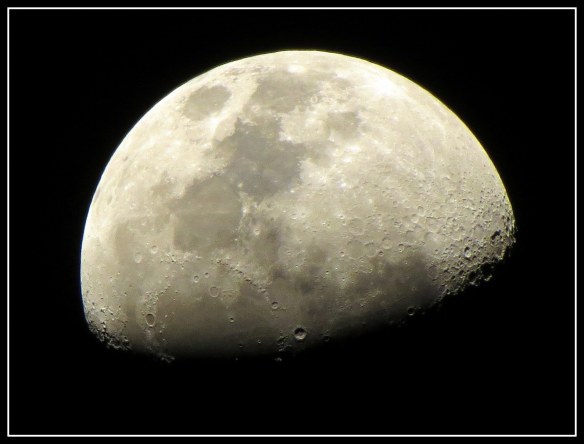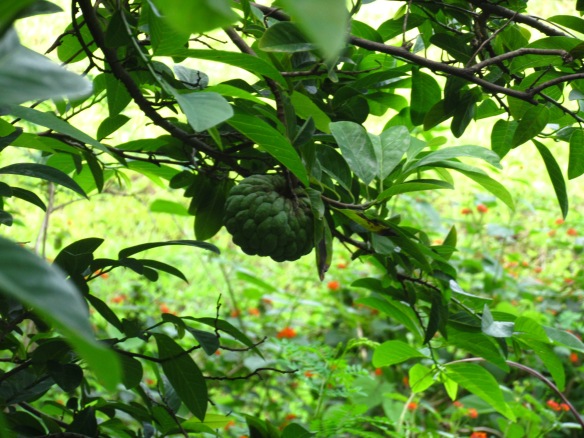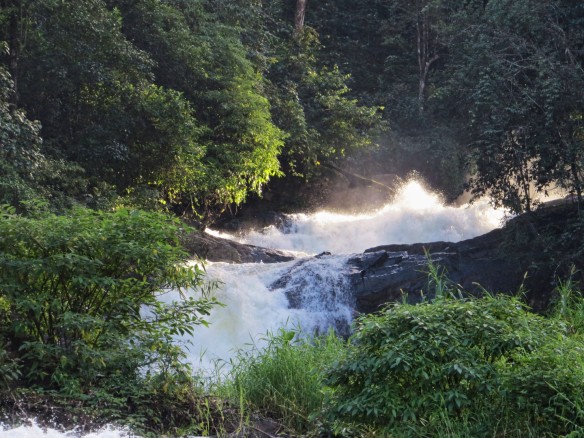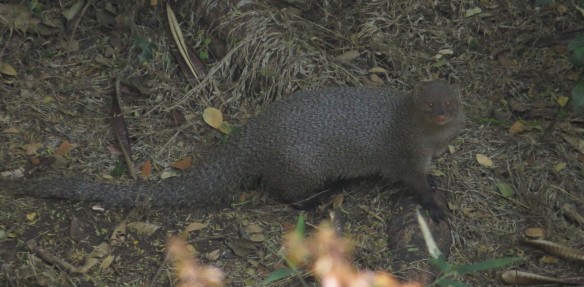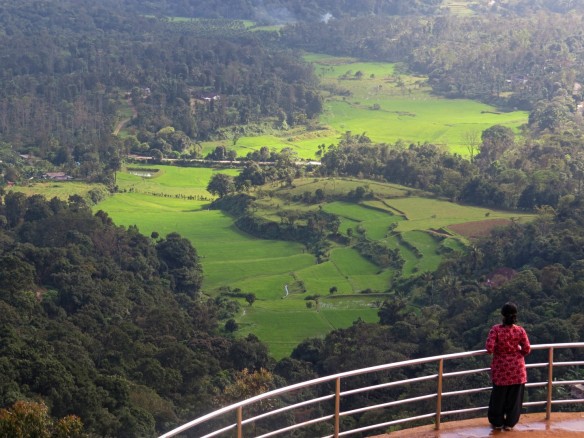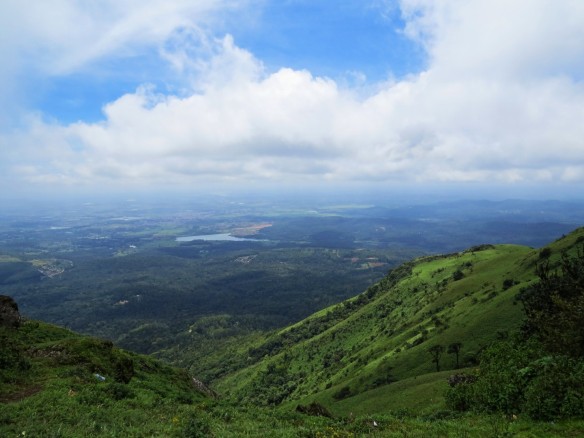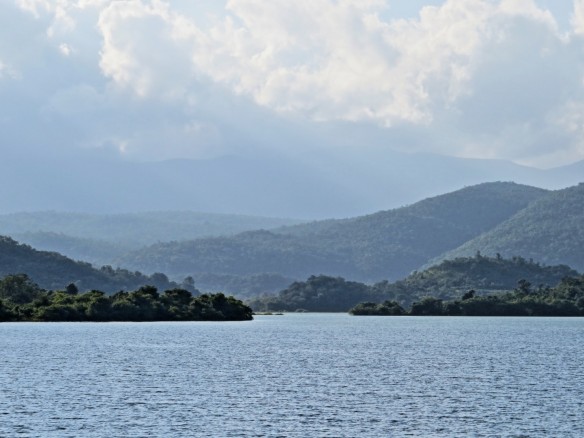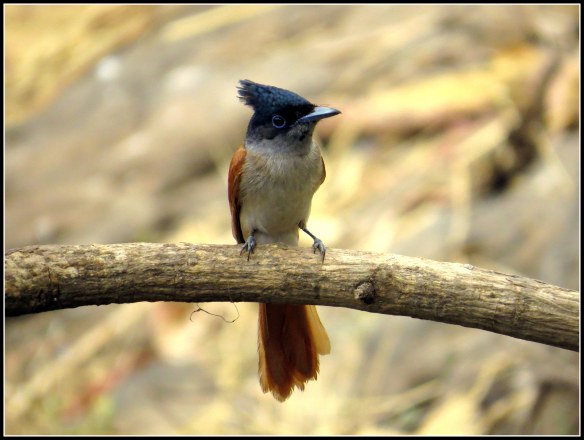
Dawn. Photo Credits: Ashish Peshave
I want to dedicate this post to a very special friend, Ashish Peshave, as it is his Birthday. It is just a co-incidence but a welcome one that this post being next one in the ‘Angels in Disguise’ series is actually about my Birding visit to Veer Dam back waters with Ashish himself. Majority of the pictures in this post have been clicked by Ashish. I hope everyone enjoys viewing his amazing pictures and reading another wonderful experience from the life of OneHappyBirder 🙂
Moments to Savour
I had always wanted to go out bird watching with my good friend Ashish someday because-one, he along with Noopur were the ones who had introduced me to this activity and-two, for the simple fun of being in like-minded company. After almost a year of talking and planning we finally made up our minds and decided to start off at Veer. It was January. Now Veer, like the areas around the Pune as I’ve mentioned earlier, is a birding paradise. A good mix of habitats helps ensure that you get a see a lot of birds especially during winter.
We were going there with an intention of observing the winter arrivals and I have to say that the special emphasis this time was on the Bar- Headed Geese. Now it can be said that Bar- Headed Geese are one of those birds which enjoy a kind of a celebrity status among us bird watchers. This may be because of their migratory status yes but also maybe, because these are the only birds known to have been seen flying over the Himalayas and sometimes even Mount Everest (there is a difference between flying over and flying through), although these reports are not confirmed, but still, these birds are capable of high altitude flights and that is certain. This tells us a lot of about the sheer might and power of this bird, blessed with a large wing span and powerful breast muscles, and a special type of hemoglobin in the blood, this bird is capable of enduring flights at such mighty altitudes where the air is so thin and with the least amount of oxygen. For Ashish and me, that is more than enough reason to be big fans of this magnificent bird. When I come to think of it, I, in my 22 years of existence haven’t once seen the base camp at Mount Everest and this bird, about ten times smaller than me in size, has maybe seen the summit of the monstrous mountain more times than my years of my existence. Now how amazing is that, this little bird makes me feel so puny!!

Bar Headed Goose. Credits: Ashish Peshave
Bar Headed Geese have their breeding grounds in central Asia and spend their winters in south Asia as far as peninsular India. They live and nest in colonies of thousands preferring secluding islands in lakes near mountains mostly to be safe and away from predators. This strategy helps when it comes to predatory mammals but not when it comes to birds and Crows and Ravens are known to steal their eggs for themselves and their young. These birds spend most of the day foraging and have a lifespan of about 25 years. Over the years people have been mesmerized by this bird’s ability of enduring such high altitude flights and so even researches have been conducted which have proved that the bodies of these geese are well adapted to endure such flights. Some even say that they find conditions at high altitudes favorable to them but yes they do undergo a lot of pain (pain we undergo while pushing the body’s limits) during their migration, so much that even human athletes would not be able to endure.
It was around six fifteen in the icy cold morning when I met Ashish and we were off to Veer on my beastly 150cc bike (my bike is beastly no doubt! No arguments on this!). Everyone prefers bird watching in the morning because this is the time when the activity of all birds is at its highest and you have a very good chance of spotting them. It was around 7 when we reached Veer and we were greeted by a pair of Red-Necked Falcons. Wow, the sight of this fearsome predatory bird being the first thing in the morning was a really good way to start off the day no doubt. The area around Veer is a good mix habitat such as scrub land, grass land, farm fields, trees, mountains, marshes and the wetlands across the back waters of Veer dam. It was wonderful to explore these areas in the cold winter morning with the sun rising on your back. We had perfect light conditions. The site of the famous Bar- Headed Geese had scrub and grass lands on one side and the back waters of the dam on the other side; this was the place where we would be able to see our celebrity birds. The approach to this place was through an old village road with a few trees and farm fields on both sides. While on the approach we enjoyed the sight of Siberian Stonechats, Pied Buschats, Greenish Warblers, Painted Francolins, Sparrows, Drongos, Egrets, White Ibises, Eurasian Spoonbills, a Marsh Harrier on the hunt for morning breakfast and lots of Ruddy Shelducks.

Pied Bushchat, Male.. Credits: Ashish Peshave
And it was the site of the Ruddy Shelducks where we finally got to see the Bar- Headed Geese, large flocks of them scattered along the entire area. We decided to not get very close to them but stay at one place, sit back and admire these lovely birds. These birds get spooked very easily and our slightest movements would have scattered them away and disturbed their morning foraging activity so we maintained a very low profile. The sun was rising on our backs and we were breathing in the early morning breeze, taking in the sights and sounds of this village and the birds. We were scanning the entire area with our binoculars talking about the different species of bird we spotted. Then a few minutes later we decided to leave and explore other areas around as we saw the flocks of the geese moving away, at this time we had yet again seen the Marsh Harrier, terrorizing some Ruddy Shelducks near the lake.
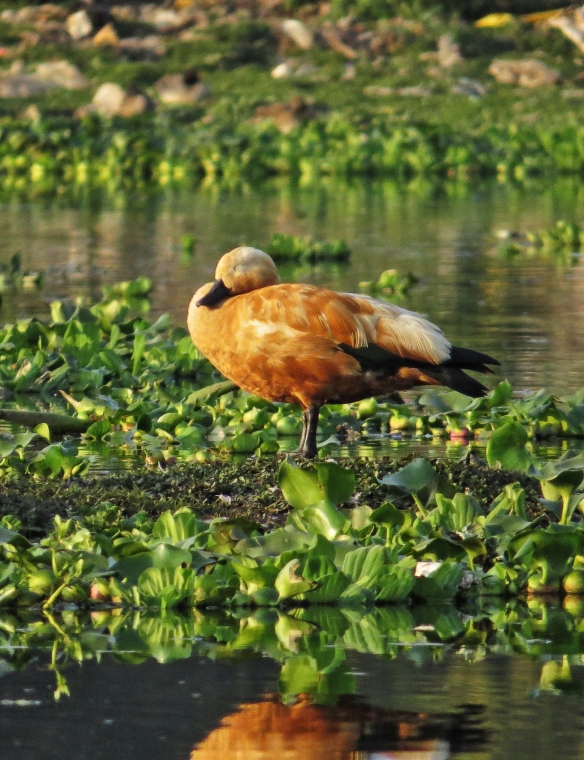
Sleeping Beauty- A Ruddy Shelduck
We decided to leave. We turned our backs to the geese, started walking towards the rising sun to the place where we had parked our bike. And then it happened. We heard something. It sounded like a lot of commotion amongst the Shelducks and the Geese and then a sudden sound of a thousand wings flapping together. We turned around we were just dumbstruck by what we saw. A huge flock of Bar- Headed Geese, easily more than 300 birds, were in flight. The entire line of our vision; every area that our eyes were capable of covering was filled with these birds flying from left to right. I guess that it was the presence of a predator that spooked the birds and invoked such a reaction from them but my-oh my, it was a sight to savour. We felt a kaleidoscope of emotion flowing through us starting from being stunned going to total bewilderment and ending with an explosion of joy watching these birds fly! We realized that if we had left even a minute earlier we would have missed this awesome spectacle. That one moment made our day, to watch this magnificent bird in such sheer numbers was a truly joyous moment! Till then we thought that there must be barely some 50 geese in that area, we were so wrong.
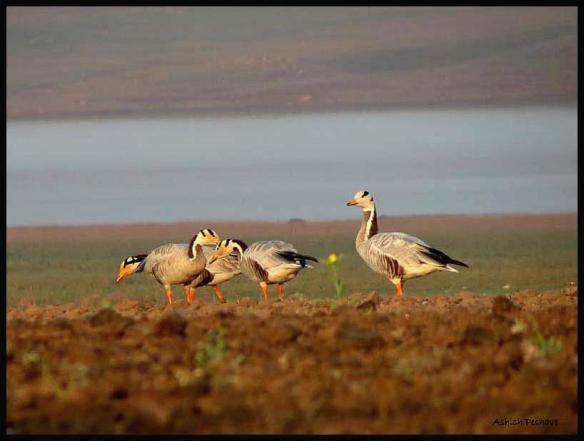
Credits: Ashish Peshave
So then, the moment of the morning had come and gone, and we had enjoyed it to the core! And now we were off to explore the other places around Veer which ensured good sightings. On our way back we had yet another chance meeting with the Red Necked Falcon Pair. I guess when we spotted them in the morning they were just getting ready to go off in search of breakfast, we were right. We observed that one of the Falcons was really busy doing something but we couldn’t understand what. Changing our angle for the view we realized that the Falcon had caught another bird, maybe the size of a Swallow, it was holding on to the carcass of the bird with its talons and was busy plucking off its feathers and devouring it simultaneously. We felt bad for the bird it had caught looking the sheer gluttony of the bird consuming it. But this is in the nature of predatory birds and it is exactly what they are designed for by nature. Now observing a predatory bird feeding on a freshly caught prey is one thing but I’d love to see a predator in action while catching prey, I’m sure it must be a thrilling experience for the bird and I’m sure that it’ll be an exhilarating experience for me too! It was only the second time in our lives that we had seen these birds so we thought that taking a few record shots wouldn’t do any harm. As it is we were quite some distance away from the birds and we made sure that our presence wouldn’t disturb them in any way. So after a few moments observing the birds and a few record shots for documentation we decided to move on.

A Red-necked Falcon. Credits: Ashish Peshave
On our way exploring the area we came across a number of common bird species like Crows, Sparrows, Mynas, Pigeons, Kites, Bee-eaters, Drongos etc. Other fairly common species we observed were the Warblers, Pipits, Larks, Sparrowlarks and Rosy Starlings. The highlights amongst these for me were surely the Ashy crowned Sparrowlark and the Rosy Starlings. Main reason or this being the first time I had seen the two bird species. Especially Rosy Starlings as I heard about the antics of these European visitors to our country.

Ashy-crowned Sparrorlark. Credits: Ashish Peshave
The thing is, Rosy Starlings are long distance migrants, are colonial breeders and they form and migrate in massively huge flocks, and these birds even outnumber the local starlings during winter. The sight of these birds in the sky at the time of their journey is one of nature’s most amazing events. They form spectacular patterns in the sky as they fly from site to site. They can also become a nuisance to the people in the cities on their passage as I had seen a video where huge flocks of this bird had chosen trees in the city to rest and in the morning, every inch of the cars parked below these trees would be filled in bird droppings! ;-D
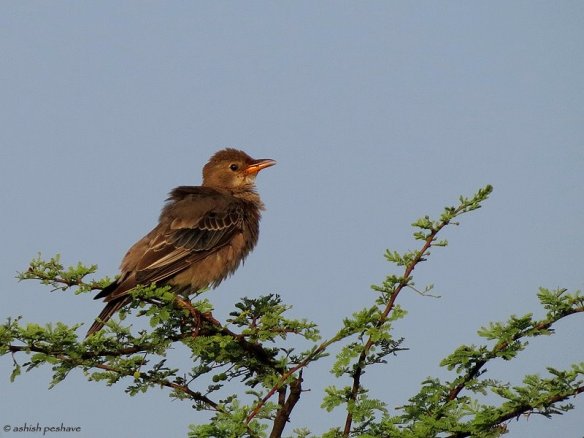
A young Rosy Starling. Credits: Ashish Peshave
Moving on, I think I might be right when I say that Ashish has a thing for scrubland birds. We can see it in his eyes when this guys talks about scrubland birds, or be it any bird species for that matter. So we hoped that we’d be able to see some good dry scrubland species, Yellow wattled Lapwings and especially Indian Coursers, relatives of the believed to be extinct Jerdon’s Courser.
It feels sad when I think that the bird might not exist anymore but what is more depressing is to realize that many more birds will be added to the extinct list in the name of what the human civilization thinks is progress! Anyways, back to my journey, we came across a good scrubland area where we expected to see the relative species. Yes, we did see some beautiful Pipits, Wagtails and Lapwings. But the Indian Courser would have been a show stopper; they were nowhere to be found. Even the numbers of Yellow wattled Lapwings all over the district have considerably decreased! We were disappointed, simply because we don’t know what the fate of these lovely birds is.

Yellow-wattled Lapwing. Credits: Ashish Peshave
Scrubland habitats favourable to these birds around Pune are restricted. Moreover these areas are also used as nesting sites for these birds. The nests and eggs of these poor birds get intentionally or inadvertently get stamped upon by grazing cattle and other human activity. It is very important to educate the masses about the importance of many such bird species for maintaining ecological balance. We certainly have to learn and to be able to co-exist essentially for the greater good. I’ll be mentioning a bit about environment protection and wildlife conservation in the next chapter.
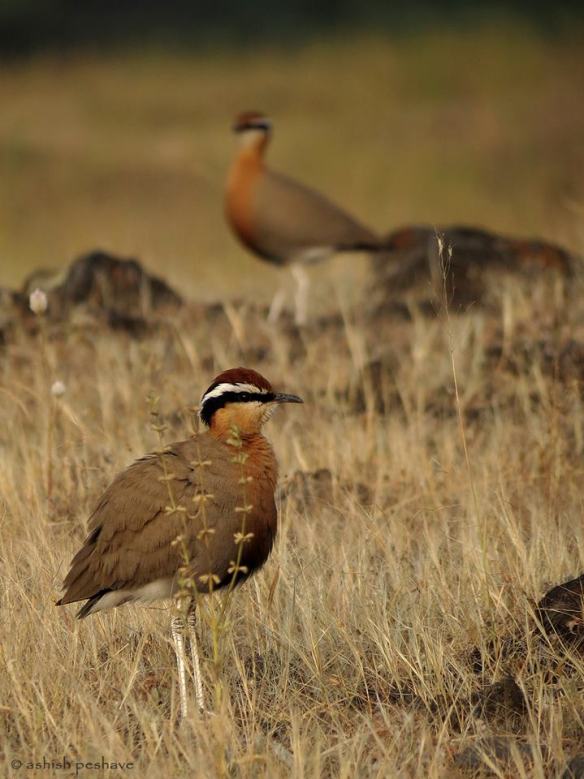
Indian Courser. Credits: Ashish Peshave
So we moved on exploring some more sites on the wetlands of Veer. It is a common thing these days that whenever you go out on highways and other village roads with bushes, fields and power cables on both sides, you are bound to come across some particular bird species whatsoever. You simply cannot miss out on sighting these species even if you try to ignore them. These are the Drongos, Rollers, Kingfishers, Bee-Eaters, Starlings, Black-Shouldered Kites and Shrikes. I might not have mentioned a few other species but even so, these are the ones which you have to come across on your long distance travels across the country highways! I might say that the less common are the Goshawks and Kestrel. And the practised eye will definitely come across more Hawks, Falcons and Eagles on the road. You might find these gliding the warm air currents most of the time, perched if you are lucky. We came across a few Shrikes, Drongos, Bee- eaters, Rollers driving our way from sight to sight. And at one place we came across a common Kestrel.

A Common Kestrel. Credits: Ashish Peshave
Now I’ll try to describe the route we were on, to travel from site to site, the best way possible. This is description of the location of the common Kestrel. It was a long straight stretch of a state highway with hills on our right side and a gentle downward slope followed by fields/dry scrubland/plain fields with the backwaters of the dam parallel to them on the left side. The Kestrel was perched on a stone on the scrubland adjacent to the backwaters. We decided to stop here as it was a good photo opportunity. There were other wetland birds and a Marsh Harrier present in the water and on the land bordering the backwaters. By the time we got off our bike and descended the slope to the scrubland the Kestrel got alert and flew away, too bad. But we had a Marsh Harrier in our sights.
The Eurasian Marsh Harrier is a wide spread winter visitor to the subcontinent from temperate and subtropical western Eurasia. A subspecies of this Harrier is an all year resident in north-west Africa. This bird like other marsh harriers prefers wetland areas and farm and grass lands bordering wetlands. It feeds on small mammals, birds, insects, reptiles and frogs. It hunts in typical harrier fashion gliding slowly over grasslands and open ground in search of prey. The harrier we were after was perched on the edge of the scrubland with its reflection clearly seen in the water adjacent to its perching area. We thought that it was a good photo opportunity with other wetland birds also in the frame. We got ourselves in a crouching position to avoid detection. At that moment of time we felt like soldiers in a battle field with long range snipers to shoot our target, and so avoiding detection becomes a life saving priority, ha ha! In this case, the target was the Harrier, the sniper was our camera, shooting meant capturing the bird on film and avoiding detection meant being invisible enough to not scare the birds off or disturb them in any way! We were getting close to the bird, we had a good angle and a good background for the photo and careful enough not to get detected. Unfortunately a few spot-billed ducks did get alert and started moving away slowly; fortunately they did not create a mass panic! And yet something happened that resulted in us throwing off curses out of our mouths like freshly baked cakes flying off shelves in Kalyani bakery!
This is what led to the wild reaction from us. Out of nowhere, a grey Heron happened to fly into our perfect harrier frame landing right beside our celebrity harrier, like an attention seeking super model. Now we didn’t mind as long as the harrier didn’t mind but the problem is that the harrier did mind the heron intruding into her personal space. That’s when we lost the opportunity as she flew away before we could get close enough, thanks to slender necked, supermodel legged grey heron. I remember Ashish swearing that he’ll never capture a grey heron on film again. Jokes apart, this is a part of a birders life, something which can be dealt with as saying ‘the one that got away’. We’ll always have similar encounters in the future; we just need to be patient enough. What is ridiculous is, the heron flew off again and landed right beside the harrier again, what was he thinking, was he trying to land a date or something with the harrier, the heron’s buddies need to give him serious lessons on dating and the fact that inter species marriages are not allowed in the bird community! But yes, the thing is that the opportunity was gone and we decided to leave

A Grey Heron
It was 11am I guess when we decided to call it a day. We already had some amazing sightings and good experiences to share. So we packed up our equipment and were off to Pune on our bike. Now when you travel to Veer via the Pune Bangalore highway there comes an intersection where you have to take a left turn to enter the village road. So on the way back to Pune we had to take a right turn to connect to the highway. At this point, exactly when we were taking the right to connect to the highway, Ashish spotted something, so you see, the day was not over yet 😀 this particular bird was perched on a sign board which indicated the appropriate speed for the highway. Now imagine this, we were crossing, on a two way highway to get to the side which connects to Pune, and my friend spots a bird right when we’re in the middle of the road. I got confused as to look at the bird or at the vehicles zooming by me. This moment to me was hilarious as I was again confused as to look at the bird as it might fly off, or to go forward or go back while we were in the middle of the highway. We finally decided to stop by the divider between the two ways and Ashish got off to go to the side of the road where the bird was, I decided to go cross over to the other side, park my bike over there and join Ashish on the bird’s side of the road again. At this point of time the bird took off and perched on a power cable beside the road. Now we were really excited because at first it looked an uncommon species to us, a falcon by the color and the overall look. We unpacked again and got out the binocular for help. Now observing closely we realized that it was an Accipiter. Now the most common Accipiter for our region is the Shikra or Banded Goshawk, but this one looked nowhere near a Shikra mainly because of the color of it, this one had a very brownish ting to it and that’s what got us confused. To describe a Shikra by color in the simplest manner is that its upperparts and head are bluish grey and the neck, breast and belly area is white with orange bands all across it. The tail is also long and barred. The bird that we saw, color wise, looked more like another Hawk of the same family. Now, a juvenile Shirka resembles the color of the bird we saw but the bands on the breast and belly suggested that it was an adult bird. This created more confusion. We took some pictures for verification and we were very excited about finding out what it was. I’ll tell you that identifying and distinguishing between Accipiters like the Hawk family is difficult as very minute details separate one species of the family from the rest, we are not experts and we thought it wise to verify and consult with experts before jumping to conclusions. So, on that note we packed again after a good day out birding and left for Pune. On the way back we had a hearty carbohydrate packed meal and after exchanging pleasantries we were off again on our bikes and back home.

The muddy Shikra 😀 Credits: Ashish Peshave
On further verification from our field guide on the pictures we had of the highway encounter with the accipiter, we were thinking that the bird looked very close to a Besra Sparrowhawk, a close relative of the Shikra and a bird not so common in our region (with reference to Maharashtra). But we still needed expert opinion. Ashish got the expert opinion we needed and this was the conclusion. It was a female Shirka who we guess had decided to roll itself in mud right before we had set our sights on it, the mud being the reason for the brownish overall look of the bird. You see, just another experience from the life of a bird watcher.
This was the ninth chapter from the ‘Angels in Disguise’ series, I hope you enjoyed reading it and if so then do come back for more from OneHappyBirder.



